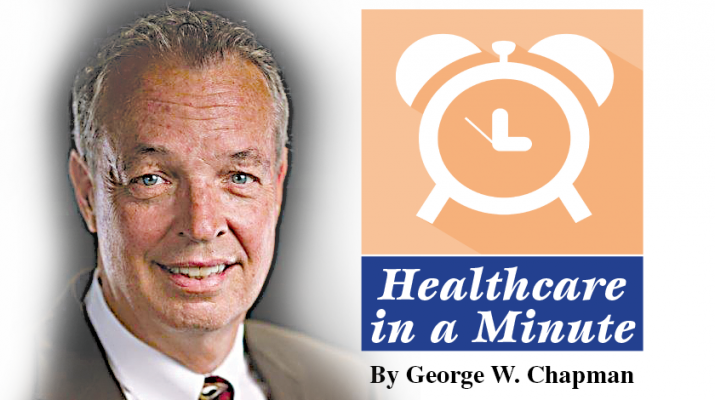 Medicare is proposing to reduce physician payments in 2024 by 3.36%. That comes on the heels of a 2% reduction this year.
Medicare is proposing to reduce physician payments in 2024 by 3.36%. That comes on the heels of a 2% reduction this year.
The American Medical Association (AMA) figures that, adjusted for inflation, it is tantamount to a 26% cut in reimbursement over the last 20 years. If you factor in the fact that staff and overhead expenses increase at about 3% a year, physicians are getting squeezed from both ends. Medicare has offered alternative payment models to physicians which have basically made attaining their fees more complicated, risky, expensive and frustrating. To use a hackneyed sports reference, the Centers for Medicare & Medicaid Services (CMS) keeps moving the goal post. To make matters worse, commercial payers mimic Medicare when it comes to establishing their physician and hospital fees. It seems like CMS is trying to kill private practice. Over half of all practicing physicians are now employed by either a hospital, gigantic health system or a corporation like CVS or Walmart. That number will go much higher as most physicians finishing their residency opt for employment versus the hassle of private practice. Ironically, CMS determined reimbursement rates for physicians and hospitals are becoming less relevant as more and more seniors opt for Medicare Advantage plans which are administered by commercial insurers like the Blues, United, Aetna and Cigna. Sooner than later, large health systems with several hospitals and thousands of physicians will sit across the negotiation table with Advantage plans to negotiate fees rather than having to lobby Congress.
RxPass
 The old-fashioned proprietary drug store on the corner was replaced decades ago by corporate chain stores operated by Rite Aid, CVS, Walgreens, etc. Now, the corporate chain stores are being replaced.
The old-fashioned proprietary drug store on the corner was replaced decades ago by corporate chain stores operated by Rite Aid, CVS, Walgreens, etc. Now, the corporate chain stores are being replaced.
Rite Aid recently filed for bankruptcy and pharmacists at CVS and Walgreens staged a three-day walk out over working conditions. To cut costs, the chains have understaffed their stores causing poor working conditions. Basically, brick and mortar drug stores are struggling. Who better to come to the “rescue” than Amazon, which has almost single handedly closed thousands of retail stores? Prime members will be issued their RxPass which guarantees two-day delivery in select cities so far: Austin, Seattle, Phoenix, Indianapolis and Miami. And it will someday be delivered via drone.
Impact of ACA
 When the Affordable Care Act became law in 2010, naysayers said the new minimum requirements for insurance coverage would cause employers to drop health insurance altogether for their workers. That never happened. The Employee Benefit Research Institute found that between 2014 and 2022 workers eligible for health coverage increased 5 percent. As of 2022, for all employers in aggregate, 81% of private sector workers are eligible to be covered by their employer’s plan. Eligibility is 99% among workers in businesses with more than 1,000 employees. It’s 97% for businesses with 100-999 workers; 80% for businesses with 25-99 workers and 25% for businesses with less than 10 employees. The ACA did away with denying coverage for pre-existing conditions and established basic coverage requirements for three levels of coverage: bronze, silver and platinum. Critics have tried to repeal the ACA more than 60 times.
When the Affordable Care Act became law in 2010, naysayers said the new minimum requirements for insurance coverage would cause employers to drop health insurance altogether for their workers. That never happened. The Employee Benefit Research Institute found that between 2014 and 2022 workers eligible for health coverage increased 5 percent. As of 2022, for all employers in aggregate, 81% of private sector workers are eligible to be covered by their employer’s plan. Eligibility is 99% among workers in businesses with more than 1,000 employees. It’s 97% for businesses with 100-999 workers; 80% for businesses with 25-99 workers and 25% for businesses with less than 10 employees. The ACA did away with denying coverage for pre-existing conditions and established basic coverage requirements for three levels of coverage: bronze, silver and platinum. Critics have tried to repeal the ACA more than 60 times.
AMA “Leaning Into” Single Payer
For almost a century, the American Medical Association was staunchly opposed to any kind of healthcare reform. Any. It lobbied to defeat reform efforts in the 1930s and 1940s. The AMA delayed Medicare for years and killed attempts by President Clinton (famously spearheaded by Hillary) to overhaul our expensive and disjointed healthcare system. But then….. it endorsed the ACA in 2009. In 2019, the proactive medical student section of AMA delegates authored a resolution to at least maintain neutrality, versus outright disdain, for a single payer system. It was narrowly defeated 53 to 47. But the shift in attitude is palpable. Coincidentally, those numbers (53-47) reflected the 53% of docs in private practice versus the 47% of employed docs. Today, 2023, more docs (over 50%) are employed than in private practice. Times have changed. Commercial insurers are earning billions of dollars annually on both their commercial and Advantage plans, while physician fees are slashed. The hassles of private practice, corporatization of medicine and the desire for better life-work balance among younger docs are driving the AMA ever closer to outright endorsing some sort of single payer or Medicare for All plan.
AI in Claims Processing
 Providers are already experimenting with AI when it comes to electronic medical records and answering high volume inquiries from patients (ChatGPT). Congress is now concerned with Medicare Advantage plans using artificial intelligence algorithms and tools to deny claims. (This could also be an issue with commercial plans.) Congress is concerned Advantage plans will deny more claims than traditional Medicare. Again, Advantage plans are operated by for-profit commercial carriers. A committee is recommending CMS compare Advantage plans to traditional Medicare when it comes to elapsed time between care and denial, the diagnosis, the reason for denial and whether an algorithm is corrected once a certain denial has been reversed in most cases.
Providers are already experimenting with AI when it comes to electronic medical records and answering high volume inquiries from patients (ChatGPT). Congress is now concerned with Medicare Advantage plans using artificial intelligence algorithms and tools to deny claims. (This could also be an issue with commercial plans.) Congress is concerned Advantage plans will deny more claims than traditional Medicare. Again, Advantage plans are operated by for-profit commercial carriers. A committee is recommending CMS compare Advantage plans to traditional Medicare when it comes to elapsed time between care and denial, the diagnosis, the reason for denial and whether an algorithm is corrected once a certain denial has been reversed in most cases.
Medical Debt
 While medical debt can no longer affect your credit score, a survey conducted by the Commonwealth Fund of 6,100 INSURED adults revealed medical debt is still a problem. 27% reported medical debt more than $500 and 15% reported debt more than $2,000. Besides causing anxiety, respondents said the debt causes them to postpone care or cut back on prescriptions. And 43% of those covered by employer coverage reported they are struggling with debt. 57% with individual plans reported they are struggling. Also 45% covered by Medicaid and 51% covered by Medicare said they were struggling with medical debt. One can only imagine what the average medical debt is for people without health insurance.
While medical debt can no longer affect your credit score, a survey conducted by the Commonwealth Fund of 6,100 INSURED adults revealed medical debt is still a problem. 27% reported medical debt more than $500 and 15% reported debt more than $2,000. Besides causing anxiety, respondents said the debt causes them to postpone care or cut back on prescriptions. And 43% of those covered by employer coverage reported they are struggling with debt. 57% with individual plans reported they are struggling. Also 45% covered by Medicaid and 51% covered by Medicare said they were struggling with medical debt. One can only imagine what the average medical debt is for people without health insurance.
Life Expectancy
 The good news is that US life expectancy has risen, moderately, from 78.93 years in 2020 to 79.11 in 2023. The bad news is, despite spending more per capita than ALL developed countries, 40 of them have better life expectancy than the U.S. The leaders are Hong Kong 85.29, Japan 85.03, Macao 84.68, Switzerland 84.25, Singapore 84.07, Italy 84 and Spain at 83.99. Most of the 40 countries ahead of us have universal plans or in our vernacular, Medicare for All.
The good news is that US life expectancy has risen, moderately, from 78.93 years in 2020 to 79.11 in 2023. The bad news is, despite spending more per capita than ALL developed countries, 40 of them have better life expectancy than the U.S. The leaders are Hong Kong 85.29, Japan 85.03, Macao 84.68, Switzerland 84.25, Singapore 84.07, Italy 84 and Spain at 83.99. Most of the 40 countries ahead of us have universal plans or in our vernacular, Medicare for All.
 George W. Chapman is a healthcare business consultant who works exclusively with physicians, hospitals and healthcare organizations. He operates GW Chapman Consulting based in Syracuse. Email him at gwc@gwchapmanconsulting.com.
George W. Chapman is a healthcare business consultant who works exclusively with physicians, hospitals and healthcare organizations. He operates GW Chapman Consulting based in Syracuse. Email him at gwc@gwchapmanconsulting.com.

